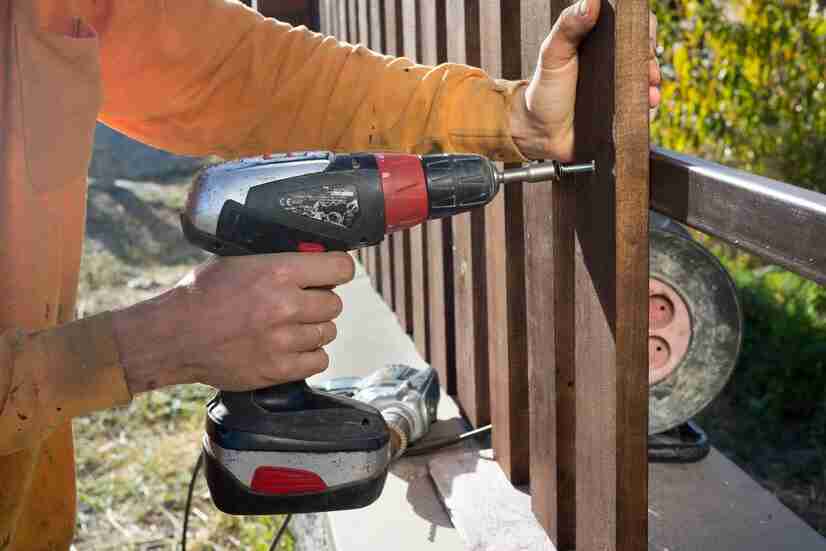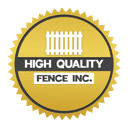Essential Tips for Efficient Fence Construction

Building a fence around your property can be a rewarding project that enhances both security and aesthetics. Whether you’re a seasoned DIY enthusiast or embarking on your first fence construction endeavor, careful planning and execution are crucial for a successful outcome. Start by defining your objectives and checking local regulations to ensure compliance. Choose durable materials suited to your climate and maintenance preferences. Properly set the foundation with sturdy posts and secure fasteners to ensure stability. Finish with protective treatments and regular maintenance to prolong the fence’s lifespan. By following these essential steps, you can create a fence that not only meets your practical needs but also enhances the beauty and value of your property.
Build Strong, Build Smart: Mastering Efficient Fence Construction
Building a fence that stands the test of time requires a smart approach from start to finish. Begin with meticulous planning: assess your needs, understand local regulations, and choose the right materials. Whether opting for durable wood, low-maintenance vinyl, or classic chain link, selecting the best fit for your climate and budget ensures longevity.
Next, focus on solid foundations—literally. Digging deep, pouring sturdy concrete, and allowing ample drying time sets the stage for a stable structure. With posts securely in place, attention turns to precise installation techniques. From aligning panels with a level to using quality fasteners, each step contributes to a fence that not only enhances security but also complements your property’s aesthetics. By following these strategies, you can confidently build a fence that stands strong and smart for years to come.
Planning and Preparation
Before you pick up any tools, thorough planning sets the foundation for a smooth construction process. Start by defining your objectives for the fence: Is it for privacy, security, or aesthetic enhancement? Understanding your goals helps in selecting the right materials and design.
- Check Local Regulations: Familiarize yourself with local zoning laws, building codes, and neighborhood association rules regarding fence construction. These regulations often dictate fence height, materials, and placement, ensuring compliance avoids costly mistakes.
- Outline Your Property Lines: Accurately mark your property lines to avoid disputes with neighbors. Use a land survey or consult property documents for precise measurements.
- Choose the Right Materials: Select materials that align with your budget, climate conditions, and desired maintenance level. Common options include wood, vinyl, aluminum, and chain link, each offering unique benefits in terms of durability, appearance, and cost.
From Plan to Perfect Fence: Essential Tips You Need
Embarking on a fence construction project involves more than hammering boards together. It starts with a clear plan that addresses your goals—whether creating privacy, enhancing curb appeal, or securing your pets and children. Understanding local regulations and obtaining necessary permits ensure compliance and prevent future headaches.
Selecting the right materials is crucial: consider factors like durability, maintenance requirements, and aesthetic appeal. Once materials are chosen, meticulous preparation of the site, precise measurement of property lines, and strategic placement of posts ensure a solid foundation. Finally, attention to detail during installation—from leveling panels to sealing wood—ensures a finished fence that not only meets but exceeds your expectations. With these essential tips, you can navigate the process from initial concept to enjoying the perfect fence that enhances your property’s value and functionality.
Tools and Equipment
Equipping yourself with the proper tools not only streamlines the construction process but also ensures safety and precision.
- Basic Tools: Essential tools include a measuring tape, level, post hole digger, shovel, circular saw (for cutting materials), hammer, and safety gear (gloves, goggles, ear protection).
- Specialized Equipment: Depending on the fence type, you may need a pneumatic nail gun, concrete mixer (for setting posts), or power auger (for digging holes in dense soil).
Setting the Foundation
A solid foundation is critical for the stability and longevity of your fence. Properly installed posts provide structural integrity, especially in regions prone to wind or shifting soil.
- Digging Post Holes: Ensure post holes are deep and wide enough to accommodate the type of fence you’re building. Typically, holes should be at least one-third of the post height and below the frost line to prevent shifting.
- Use Quality Concrete: For stability, set posts in concrete rather than just soil. Follow manufacturer guidelines for mixing and pouring concrete to achieve optimal strength.
- Allow for Proper Drying Time: Allow concrete to cure fully before attaching fence panels or applying pressure to the posts. This typically takes 24 to 48 hours, depending on weather conditions.
Installation Techniques
With the posts securely in place, attention shifts to installing the fence panels or boards. This phase requires precision to ensure a uniform appearance and functional performance.
- Aligning Panels: Use a level and measuring tape to ensure panels are installed straight and at consistent heights. Uneven panels can detract from the fence’s visual appeal and compromise security.
- Securing Fasteners: Depending on the material, use appropriate fasteners such as nails, screws, or brackets. Stainless steel or galvanized hardware resists rust and enhances durability, particularly in humid climates.
- Consider Maintenance Needs: Factor in future maintenance when selecting installation methods. For instance, using brackets makes it easier to replace damaged panels compared to methods involving direct attachment to posts.
Finishing Touches and Maintenance
Completing your fence involves adding finishing touches that enhance both its appearance and functionality.
- Staining or Sealing: Apply a protective finish to wood fences to prolong their lifespan and maintain color vibrancy. Choose a stain or sealant suited to your wood type and climate conditions.
- Trim and Gate Installation: Install trim pieces along the top or bottom of the fence for added aesthetic appeal. Additionally, ensure gates are properly installed with sturdy hinges and a reliable latch mechanism.
- Regular Maintenance: Schedule periodic inspections to check for loose fasteners, signs of rot or damage, and ensure gates operate smoothly. Addressing issues promptly prevents costly repairs down the road and extends the fence’s lifespan.
Secure Your Space: Essential Steps for Building the Perfect Fence
Creating a secure and private space starts with building the perfect fence. Begin by defining your objectives: do you need privacy, protection for pets, or a decorative boundary? Understanding these goals helps in choosing the right materials and design that align with your vision and practical needs.
Before you begin construction, it’s crucial to check local regulations and obtain any necessary permits. This ensures compliance with building codes and neighborhood guidelines, preventing potential setbacks. Next, focus on the foundation: digging sturdy post holes and setting them securely with concrete ensures stability and longevity. Finally, meticulous installation of panels and gates, using quality fasteners and precise measurements, completes the project. By following these essential steps, you can confidently build a fence that not only enhances security but also adds value and beauty to your property for years to come.
Crafting Security: Tips for Efficiently Constructing Your Fence
Crafting a secure fence involves careful planning and execution to ensure both functionality and durability. Begin by assessing your security needs—whether it’s keeping intruders out, providing a safe space for children and pets, or simply enhancing privacy. Understanding these priorities helps in selecting the right materials and design. For robust security, consider materials like steel or aluminum that offer strength and resilience against external elements.
Once you’ve chosen your materials, meticulous preparation of the site is crucial. Clear the area of debris, measure property lines accurately, and consult local regulations to avoid setbacks. Digging deep, sturdy post holes and setting them with concrete provide a solid foundation that withstands time and weather. When it comes to installation, ensure panels are aligned correctly using a level and secure fasteners for added stability. Regular maintenance, such as inspecting for loose screws or damaged panels, ensures your fence remains a reliable barrier.
Beyond Boundaries: Key Tips for Efficient Fence Installation
Installing a fence that exceeds boundaries—both literally and figuratively—requires careful planning and execution. Begin by determining the purpose of your fence: whether it’s to mark property lines, enhance privacy, or add aesthetic value. Understanding these goals informs decisions on materials, design, and construction methods that align with your vision.
Efficiency starts with thorough preparation. Clear vegetation and debris from the area, verify property lines, and consult local regulations to avoid legal issues. Choose durable materials suited to your climate and maintenance preferences, ensuring longevity and minimal upkeep. Digging precise post holes and setting them securely with concrete provide a solid foundation that withstands shifting soil and inclement weather. During installation, use a level to ensure panels are straight and securely fastened for a professional finish. Regular maintenance, such as inspecting for wear and addressing any issues promptly, ensures your fence remains a reliable and attractive feature of your property.
Building a fence is more than just enclosing your property—it’s about enhancing security, adding curb appeal, and defining your space with craftsmanship. By following the essential tips outlined in this guide, you can embark on your fence construction project with confidence. From meticulous planning and selecting the right materials to ensuring solid foundations and precise installation, each step contributes to a fence that meets your practical needs and enhances your property’s value.
Whether you’re a DIY enthusiast or seeking professional assistance, these insights will help you navigate the process effectively. For those in Manteca, CA and surrounding areas looking to transform their property with a quality fence, High Quality Fence stands ready to assist. Contact us at 209-815-9015 or visit our location at 1112 N. Main Street #171 to discuss your project and discover how we can help you achieve your fencing goals.

